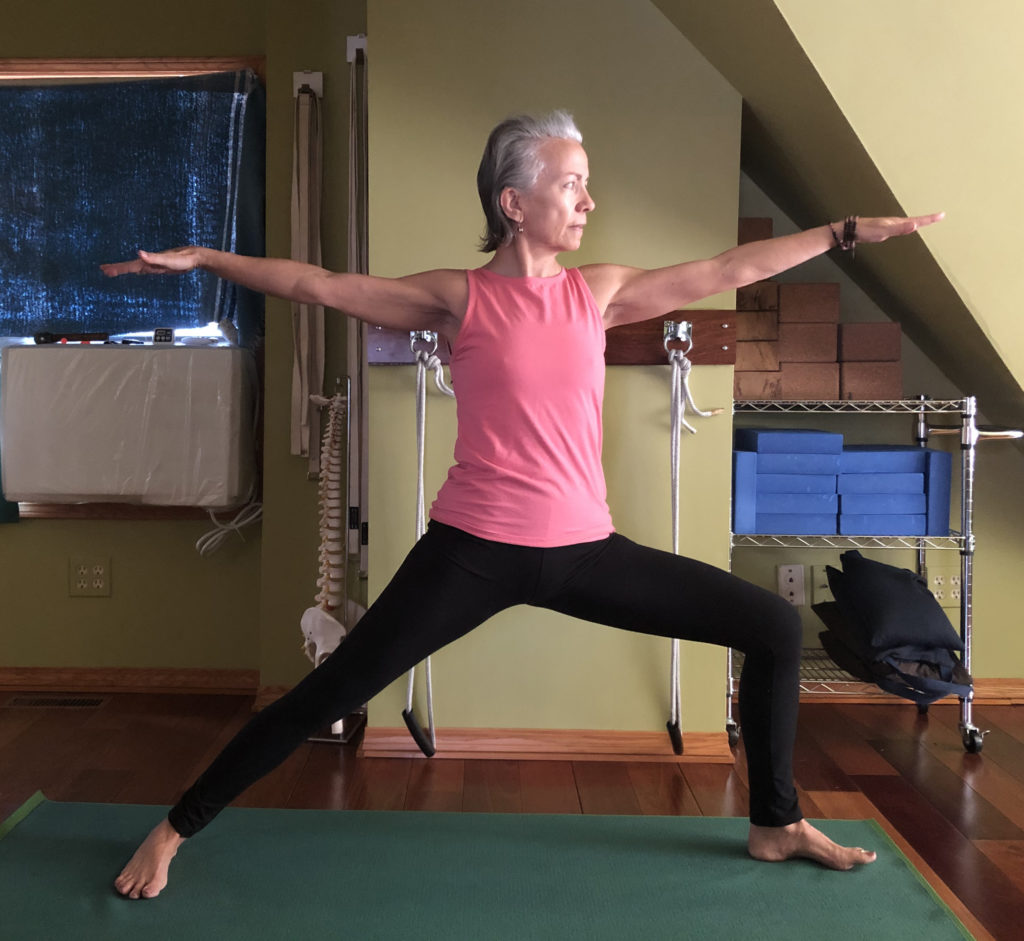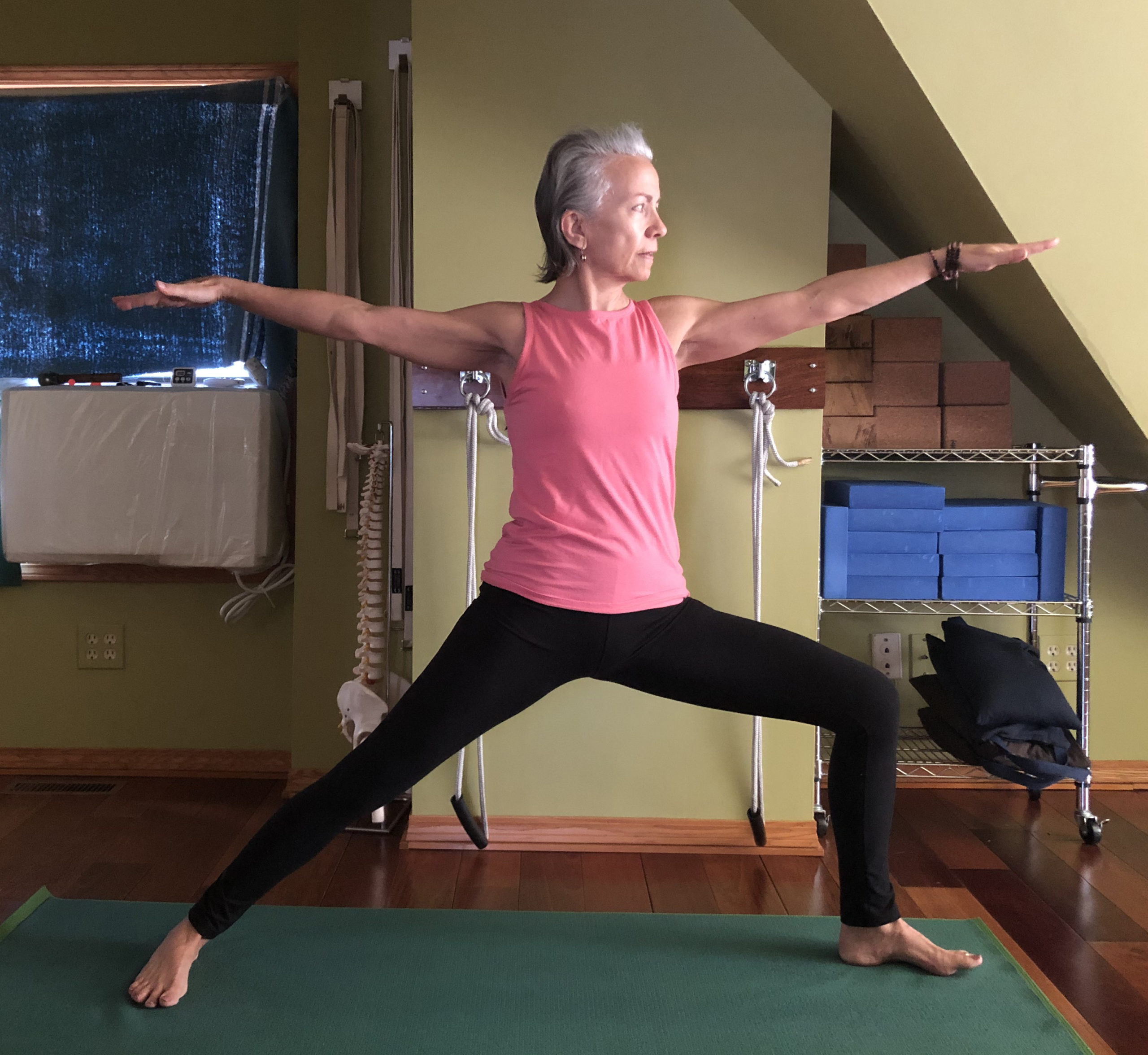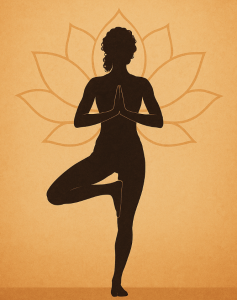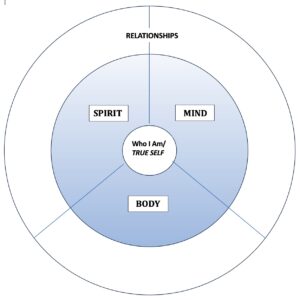The following teaching from the Vigyan Bhairava [or God Consciousness] Tantra, Verse 27 states,
When by itself the breath is retained after inhalation or exhalation – then in the end, through the Energy known as peace, Peace is revealed.
This verse refers to a situation, where our breath automatically stops after inhalation or exhalation.
When we are still, silent, we reach Goddess-God Consciousness. At the center, the gap between two breaths, we are completely still. We are not even breathing. By being aware of that middle state, that stillness, all thoughts disappear. Because our body is completely still, our mind also becomes still. When our mind becomes still, the form of Goddess-God appears. That form is peace.
What I love about this teaching is the fact that energy has form. And the form of spirit or our true self, what this 2000-year-old text calls Goddess-God consciousness, is peace. I like to think that it is peace, love, and joy because as the practice of asana and meditation progress, I can feel myself becoming more loving and joyful as well as peaceful.
What Asana teaches us is that we can still our body. Each pose we practice reveals sensation or areas of emotional holding within our physical being. This is Asana’s intention, that is, to show us where we are suffering. With compassionate awareness, supportive yoga actions, and dedicated practice, we eventually release the holding and sensations. What is left is freedom, which energetically takes the form of ease and stability (peace).
When asked to take the Virabhadrasana II pose, many yogis struggle to find peace (ease and stability) in this pose. The pose builds our inner courage as well as our physical strength and flexibility. As warriors do, we are learning to stand in our truth and to eradicate our fear and ignorance. To discover who you are in Virabhadrasana II, practice the following three yoga actions. Click on the audio file below for my verbal instructions.

Yoga Action (Annamaya Kosha):
– Align the crown of your head over your pubic bone, and draw the sacrum and tailbone down toward the mat.
Yoga Action (Pranamaya Kosha):
– draw the bottom ribs (Left & Right sides) in & down toward the L & R sides of sacrum & tailbone. Feel the energetic connection between these points.
Yoga Action (Manomaya Kosha):
– rest in the pose by silently repeating to yourself “Surrender to ease, stability, freedom”
NOTE: It may take more than one pose before you awaken these yoga actions or areas in your body and begin to feel the arising sensations and releases. In that case, apply the three yoga actions to the following poses –
SEATED BADDHA KONASANA
UTTHITA PARSVAKONASANA
ARDHA CHANDRASANA
PRASARITA PADOTTANASANA
For more asanas, sequences, and yoga actions, click here.
Namaste.





